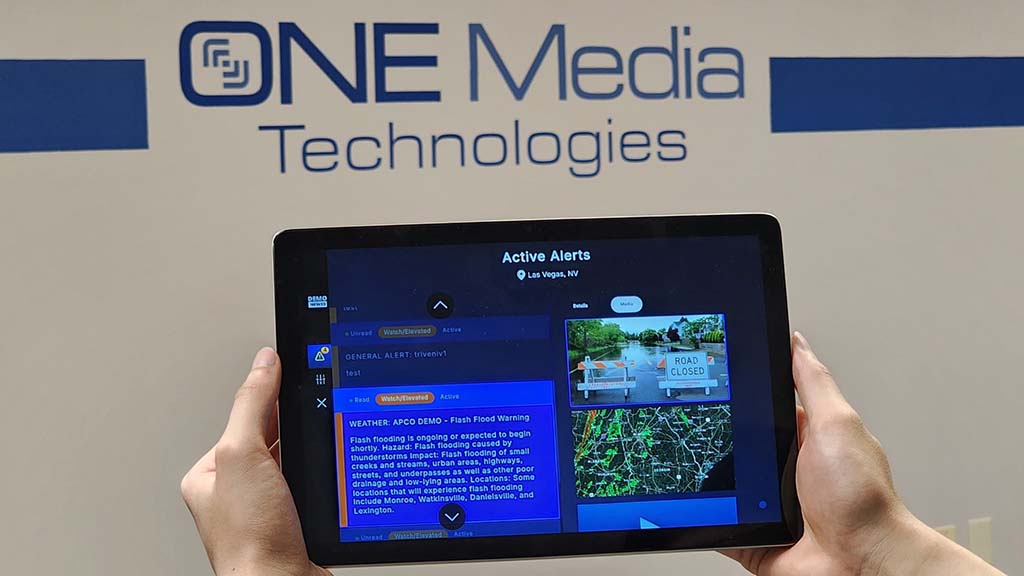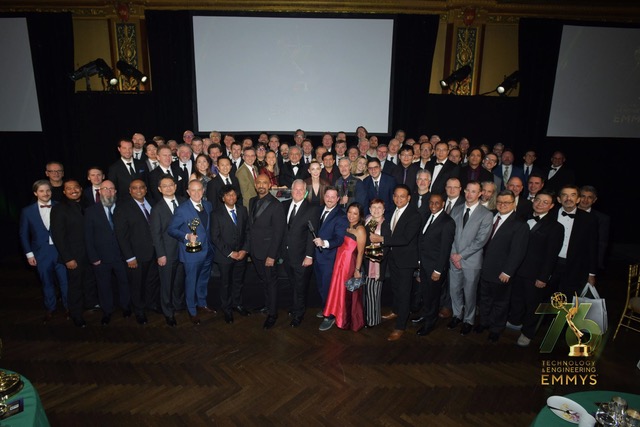Sinclair to Unveil ATSC 3.0-Enabled Android Tablet at APCO 2025
Station group aims to demonstrate the value of receiving broadcast alerts on the go

BALTIMORE—Sinclair will make the first public showing of a NextGen TV-enabled Android media tablet with integrated ATSC 3.0 receiver and antenna during the public-safety convention APCO 2025, to be held July 27-30 at the Baltimore Convention Center.
The broadcaster, exhibiting with the AWARN Alliance and Digital Alert Systems in booth 3065, is debuting the media tablet during the annual gathering of the Association of Public-Safety Communications Officials to underscore the important role ATSC 3.0 can play in keeping the public informed during emergencies—whether at home watching TV or on the move.=

“We’ve had our eye on APCO for this demonstration because we want to show public safety officials—particularly public-safety communications officials—what 3.0 can do in the home and on the go in a public safety context,” Patrick McFadden, senior vice president for global public policy and communications at Sinclair, said.
But why should a tablet that can already connect to a cell tower or Wi-Fi network need ATSC 3.0 to receive emergency messaging? It boils down to resiliency, McFadden said.
“I’m not taking a shot at the wireless carriers, but their networks are just designed differently than ours,” he said. “If you look at some of those counties in Western North Carolina in the aftermath of Hurricane Helene, 60 to 70% of the cell sites went out of service. Our station in Asheville never went off the air.
“That resilience and reliability is tremendous for the TV viewer, but what about someone who’s out of their home when the emergency happens or someone who’s been evacuated?” he asked, rhetorically. “If we can combine our resilience with the ubiquity of mobile devices, that’s a pretty huge public-safety benefit.”
McFadden declined to identify the company responsible for making the NextGen TV-enabled tablet but said Sinclair has been “working with a number of manufacturers” to develop 3.0 mobile devices, including tablets and phones.
The professional video industry's #1 source for news, trends and product and tech information. Sign up below.
In October 2020, Sinclair subsidiary ONE Media Technologies surprised the industry when it unveiled production samples of the Mark One NextGen TV-enabled smartphone. Since then, it has rolled out the next-generation Mark Two smartphone.
Like the Mark One, the tablet shown next week at the gathering is not available for purchase, he said, adding, “I would characterize it as a precommercial trial.” However, the broadcaster has ordered “a large number of these devices,” a sign that the tablet is beyond the proof-of-concept stage. “We’re confident that the market will advance as 3.0 moves forward,” McFadden said.
Besides the NextGen TV-enabled tablet, Sinclair will show the Mark Two 3.0-enabled smartphone as well as NextGen TV dongles that work with mini devices. All of these devices will be used to demonstrate to the more than 5,000 show attendees what emergency alert messages and advanced emergency information could look like on these devices, he said.
Broadcasters in North Carolina, including PBS North Carolina and Capitol Broadcasting’s WNGT, along with several technology developers and vendors demonstrated a few years ago the ability of ATSC 3.0 digital broadcast paging to transmit emergency call data to first responders in the field.
Sinclair’s APCO 2025 demonstration of the version 3.0 tablet and phone, however, will focus on the consumer-facing side of emergency communications, not first responders. “One of the great things about 3.0 is it can do both [communicate to first responders and the public],” he said. “Broadcasters’ use of 3.0 to communicate emergency alerts and information to the public is a valuable service we can provide to the communities we serve, and we want to make that clear to those attending APCO.”
Of course, having the ability to receive an over-the-air TV signal on a tablet beyond emergency alerting and information is important to both the public and broadcasters. “Obviously, the way people consume video has evolved and will continue to evolve, and the opportunities for us to reach viewers wherever they are is hugely significant for the industry,” he said.
Phil Kurz is a contributing editor to TV Tech. He has written about TV and video technology for more than 30 years and served as editor of three leading industry magazines. He earned a Bachelor of Journalism and a Master’s Degree in Journalism from the University of Missouri-Columbia School of Journalism.

